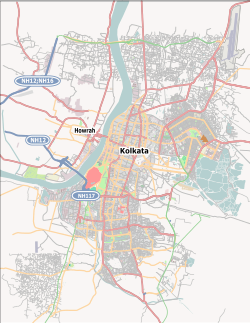Pilkhana | |
|---|---|
Neighbourhood | |
| Coordinates: 22°35′39″N88°20′19″E / 22.59417°N 88.33861°E | |
| Country | |
| State | West Bengal |
| Division | Presidency |
| District | Howrah |
| City | Howrah |
| Metro Station | Howrah Maidan and Howrah |
| Government | |
| • Type | Municipal Corporation |
| • Body | Howrah Municipal Corporation |
| Elevation | 28 m (92 ft) |
| Languages | |
| • Official | Bengali, English |
| Time zone | UTC+5:30 (IST) |
| PIN | 711101, 711106 |
| Telephone code | +91 33 |
| ISO 3166 code | IN-WB |
| Vehicle registration | WB |
| HMC wards | 10, 12, 13, 15, 16 |
| Lok Sabha constituency | Howrah |
| Vidhan Sabha constituency | Howrah Uttar |
| Website | wb |
Pilkhana is a neighbourhood in Howrah of Howrah district in the Indian state of West Bengal. Pilkhana is governed by Golabari Police Station under Howrah City Police. It is a part of the area covered by Kolkata Metropolitan Development Authority (KMDA). [1]



